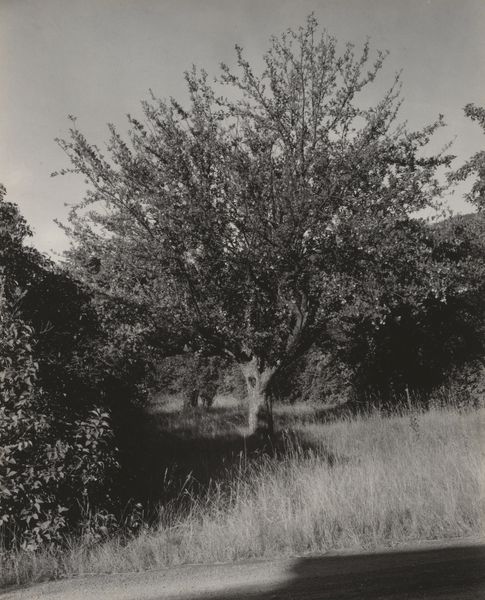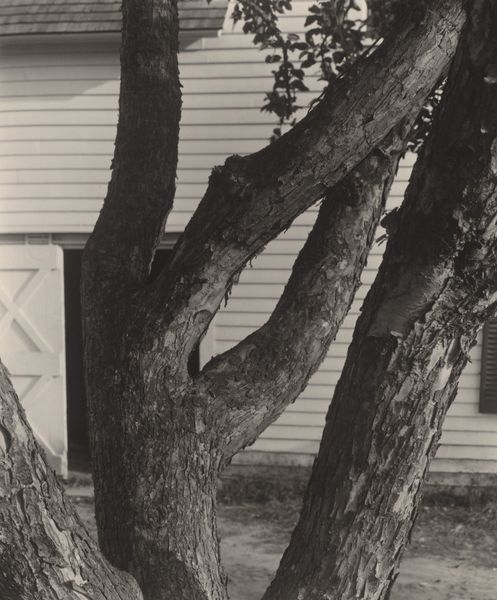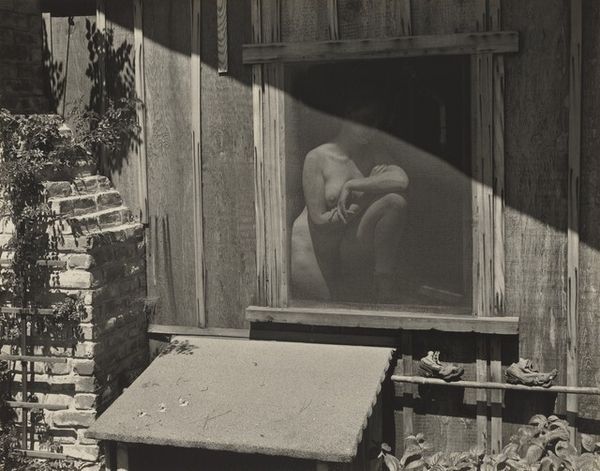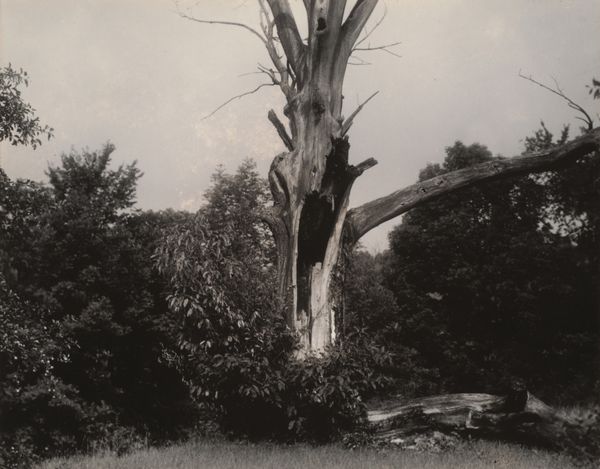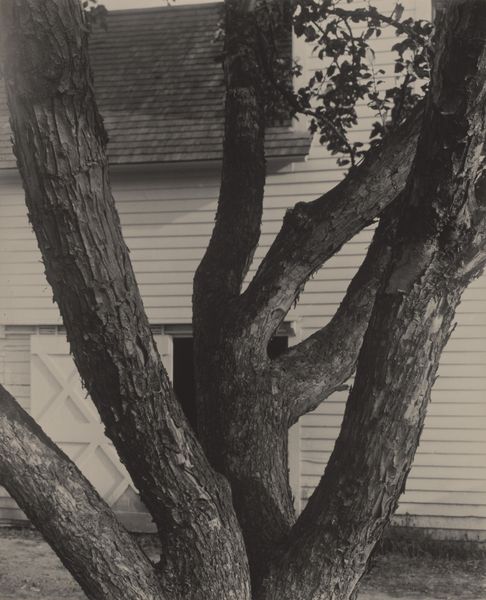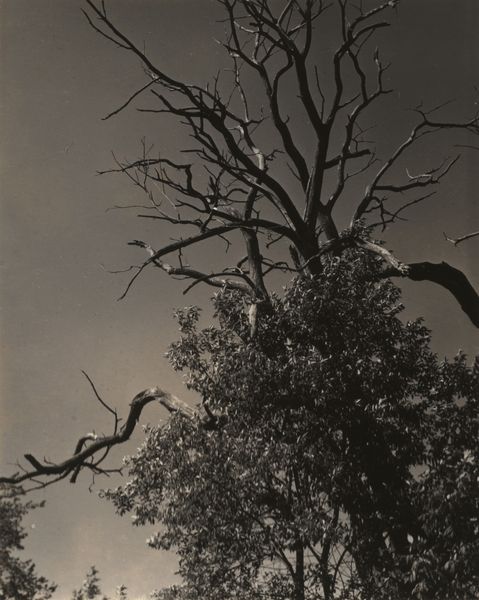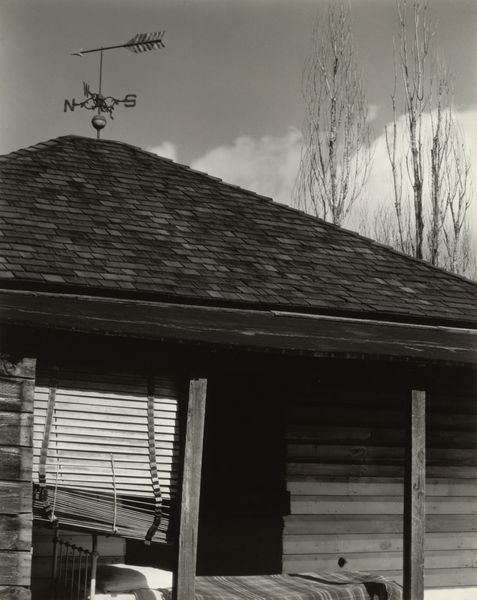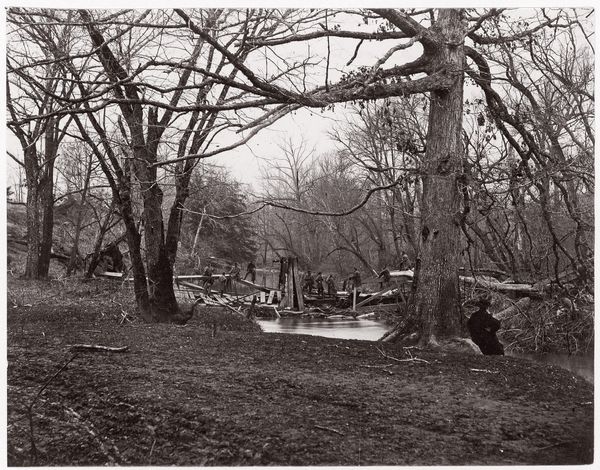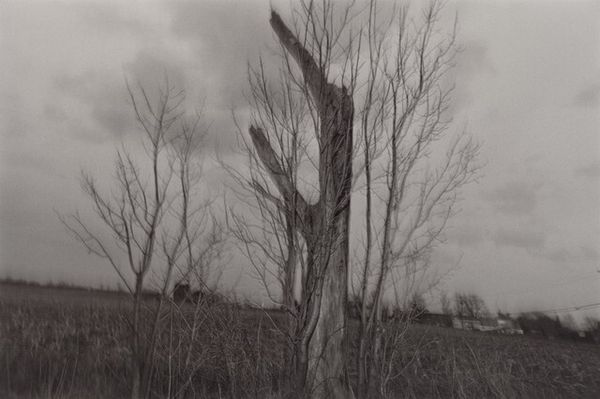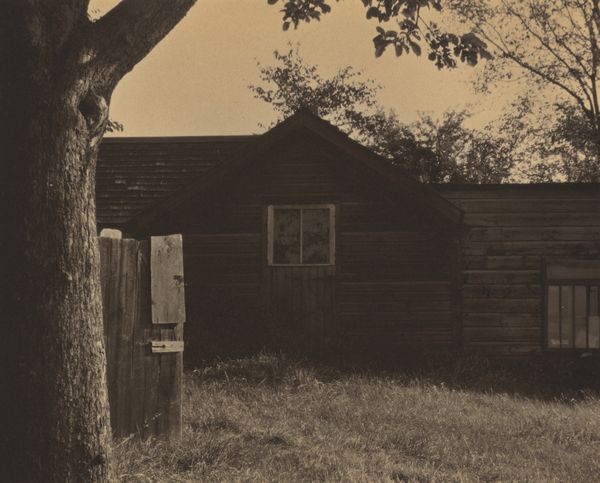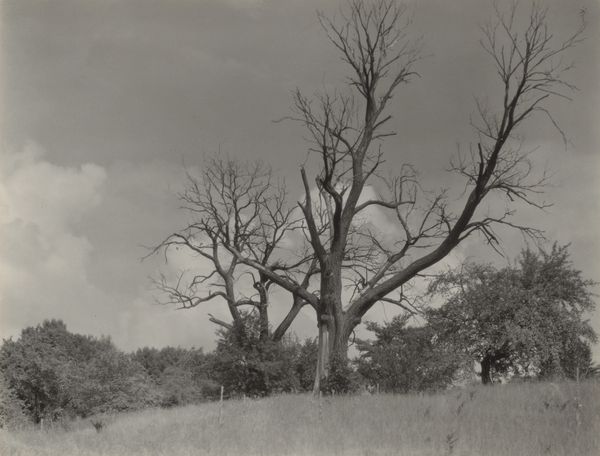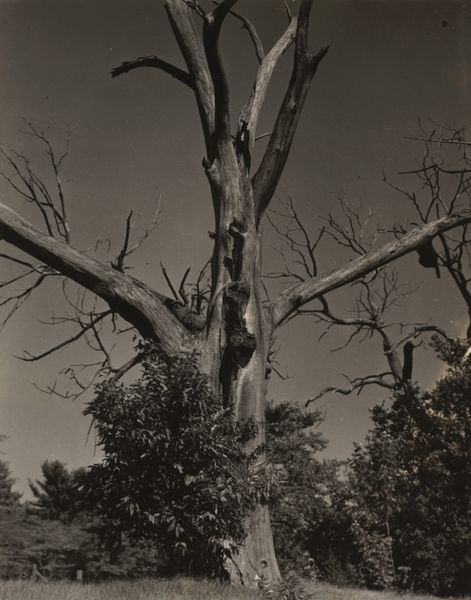
photography, gelatin-silver-print
#
black and white photography
#
landscape
#
photography
#
gelatin-silver-print
#
monochrome photography
#
realism
#
monochrome
Dimensions: image: 19.3 x 24.3 cm (7 5/8 x 9 9/16 in.) mount: 38.1 x 39.2 cm (15 x 15 7/16 in.)
Copyright: National Gallery of Art: CC0 1.0
Curator: Edward Weston's 1935 gelatin silver print, "Corral," presents a seemingly simple, rural scene. It offers a stark depiction of a weathered barn, a gnarled tree, and a recumbent cow, all rendered in black and white. Editor: My first impression is one of melancholy. The monochrome palette and bare tree evoke a sense of starkness, even emptiness. The cow looks almost ghostly. Curator: That sense of melancholy might stem from the period in which it was made; part of the American "Dust Bowl era," and photographed during Weston's Guggenheim Fellowship where he explored the American West. Editor: The juxtaposition of the organic, decaying tree with the structured barn is powerful. It seems to represent a tension between nature and human intervention. That particular tree in the foreground with its bare branches almost looks like it's performing, or offering up, the rural scene beyond. Curator: Absolutely, Weston was a master of composition. We could look at this work in light of shifting perspectives in early 20th-century rural America, documenting changes brought about by industrialization and economic hardship through a “realist” lens. The image also captures a specific moment in California's agricultural history. Editor: The placement of the cow is interesting. It’s a potent symbol for a pre-industrial age, for the simple pastoral life. There's a sense of timelessness in that the animal also carries cultural weight that spans millennia of agrarian societies. Curator: And it certainly carries emotional weight, in the image the barn could equally evoke a sense of history. This is quite relevant; institutions like the Museum of Modern Art, for instance, played a significant role in defining the aesthetic values associated with this kind of work during the interwar period. Editor: What’s striking is how Weston renders mundane subjects with such precision. The weathered planks of the barn and the animal lying passively tell a story far broader than any snapshot could achieve. After all, even such a quiet and subtle arrangement of subject matter communicates volumes about time and progress, particularly our human understanding of it. Curator: Seeing "Corral" prompts us to consider how a seemingly simple rural landscape encapsulates a web of social, historical, and even personal experiences of hardship. Editor: Indeed, it’s a study in quiet symbols of the land and history’s imprint, inviting contemplation of the cycles of time and life.
Comments
No comments
Be the first to comment and join the conversation on the ultimate creative platform.
